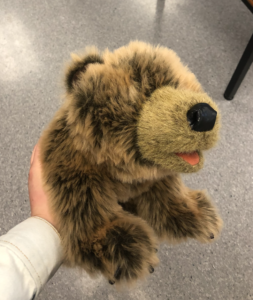Educators respect and value the history of First Nations, Inuit and Metis in Canada and the impact of the past on present and the future. Educators contribute towards truth, reconciliation and healing. Educators foster a deeper understanding of ways of knowing and being, histories, and cultures of First Nations, Inuit and Metis.
During my 4 week practicum, I was extremely conscious to incorporate Indigenous content wherever I could. It was very important to me that I focus on this standard, and do my best to both meet and exceed expectations.
Every lesson that I taught, I incorporated multiple First Peoples Principles of Learning. I wanted to incorporate multiple principles each lesson because I thought this was a more holistic approach to teaching through the principles. All of my lessons have some sort of cross-curricular design, so why not my First Peoples Principles?
When it came to Indigenous content, I made sure to incorporate the content into each subject.
In Language Arts, I chose place-based read-alouds and books by Canadian Indigenous authors when I would read my Kindies their morning story. When using my animal puppets to teach phonics, I would introduce the puppets as their Dakelh names, the local Indigenous language. My students loved learning the animals’ names, and loved interacting with them. Their favourite was Sus, the bear.

In Math, I used story telling to introduce each lesson. I taught the concept of “more” and “less” using a canoe metaphor, and ensured that my students knew why I chose to use the culturally significant canoe as my learning device. In teaching patterns, I had my students learn about Indigenous beading techniques. I brought in a big bucket of beads, and as a class, we discussed potential meanings and symbolism for each colour and shape of bead. My students then made their own necklaces using their knowledge of patterns and beading symbolism. This lesson turned out to be a highlight of my practicum! It was a popular favourite among both myself and my students.
Here is my own necklace! Each of my students added a few beads to the necklace to symbolize my relationship with each of them. 
In Science, I incorporated Indigenous knowledge into each of my lessons in my seasonal changes unit. With my lessons on seasonal changes in trees, hibernation, adaptation, and migration, I taught my students the historic Indigenous beliefs surrounding each of these phenomena. In the activities accompanying each lesson, I taught my students the cultural significance of the animals we discussed: Bears, Rabbits, and Geese.
I also added a lesson to the Seasonal Changes unit. This lesson focused on historical Inuit adaptations to the seasons. We explored how Inuit people historically lived in tipis during the warm seasons and igloos during the cold seasons. We also discussed the use of igloos today, as temporary shelter used in instances such as hunting trips. Finally, we learned techniques used in building igloos, focussing on the creation and stacking of ice blocks. My students loved getting outside into the snow and attempting to build their own ice blocks for igloos! I was overjoyed to witness my students continue to make ice blocks during their recess and lunch time breaks outside.
In Social Studies, I was very proud and humbled to have the opportunity to administer one of the self-assessments students must do during the year. I focused on a few select Core Competencies, and tied them to the Seven Sacred Teachings. My students learned about courage, through the teachings of the Bear. Courage was tied to healthy behaviours and the sharing and reflections of emotions. This was particularly important to my students as they are participating in Social and Emotional Learning in their classroom.
Finally, in Gym, I attempted teaching Indigenous games, such as lacrosse! I also modified different tag games to include local animals from our community. My students loved my twists on some of their favourite games.
I am proud of my incorporation of both the First Peoples Principles of Learning and Indigenous and Inuit content into my teachings. I am excited to continue to both learn and teach this content!